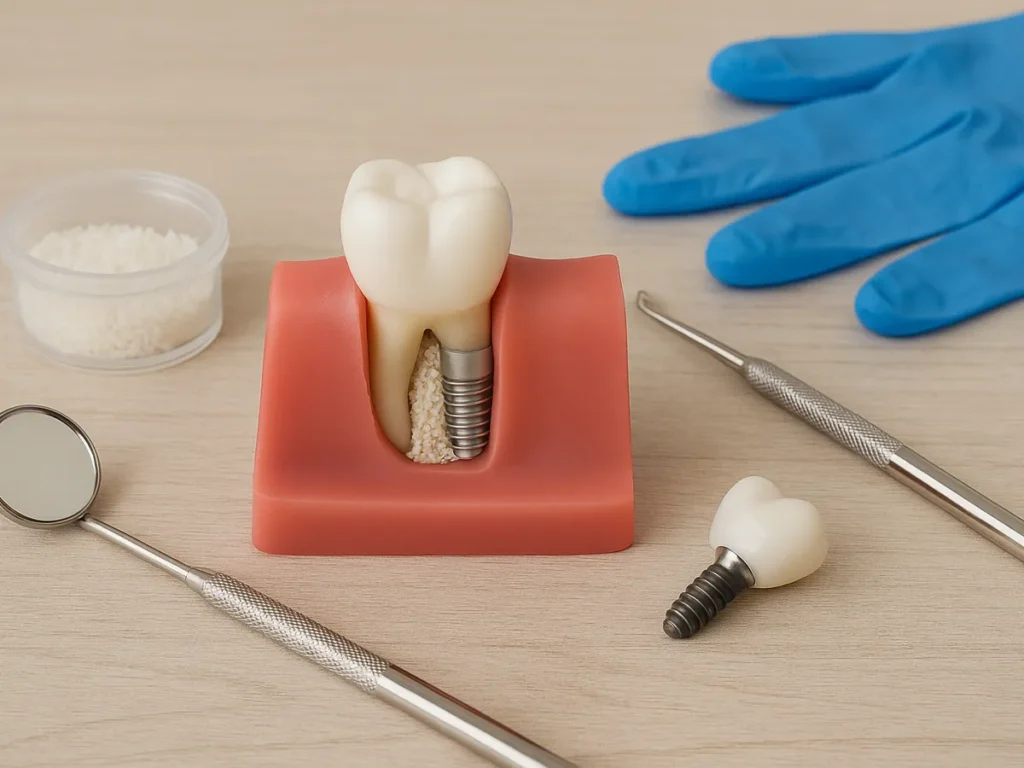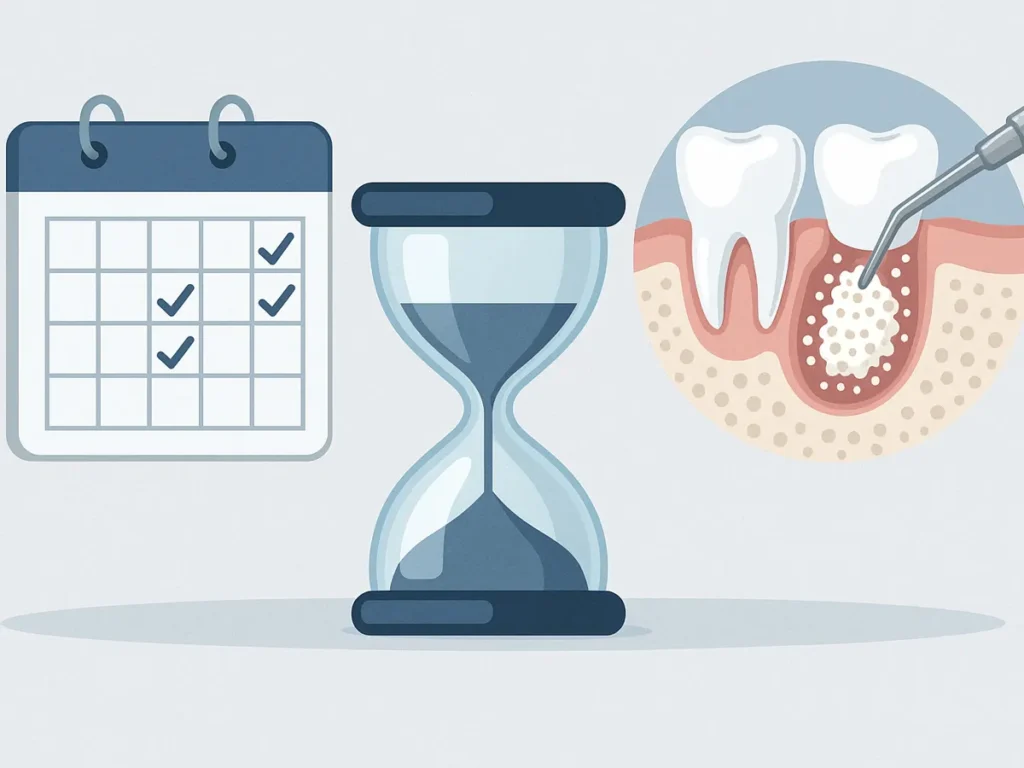When considering dental implants, you may come across the term “bone graft.” This procedure is a crucial step for many patients who are looking to restore their smile and improve their oral health. Dental implants offer a durable and natural-looking solution for missing teeth, but they require a strong foundation to be effective. In this article, we’ll explore what a bone graft dental procedure is, why it might be necessary, the healing stages involved, and what you can expect during recovery.

What Is a Bone Graft for Dental Implants?
A bone graft for dental implants is a surgical procedure that involves adding bone material to your jaw to create a solid foundation for dental implants. The bone can be taken from your own body (autograft), a donor (allograft), or it can be synthetic (alloplast). Your dentist will recommend the best option for your needs.
The goal is to stimulate new bone growth around the graft, strengthening your jaw and making it suitable for dental implants. Choosing a skilled surgeon for bone graft surgery for teeth ensures optimal placement and integration.
Why Bone Grafting Is Necessary Before Implants
Do I Need a Bone Graft Before Implants?
Do I need a bone graft before implants? Not always. But when there’s insufficient bone to support an implant, your dentist may recommend this procedure. This lack of bone density can be due to:
- Periodontal disease
- Tooth loss
- Trauma or injury
- Natural jawbone deterioration over time
Let’s break down the most common reasons why bone grafting becomes essential.
Tooth Loss and Jawbone Shrinkage
When a tooth is missing, the bone that once supported it starts to deteriorate. Over time, this shrinkage affects your ability to get dental implants. A bone graft for dental implants helps restore lost bone and maintain facial structure.
Bone Graft for Periodontal Disease
Advanced gum disease can damage both soft tissues and the underlying bone. A bone graft dental procedure is often required to rebuild this lost support and make implants possible in the future.
Trauma or Injury to the Jaw
Physical trauma can lead to fractures or bone loss. In such cases, bone graft surgery for teeth can repair damage and prepare the jaw for long-term restoration through implants.
What to Expect During Bone Graft Surgery for Teeth
Pre-Procedure Consultation
Your dentist will take X-rays or 3D scans to assess your bone health. You’ll discuss the type of graft material, sedation options, and what to expect during and after the procedure.
This step is essential in determining whether you need a bone graft before implants, and it helps tailor your treatment plan for the best outcome.
The Surgical Procedure
During surgery, your dentist makes a small incision in the gum and places the graft material onto the jawbone. Stitches are used to close the area, and the healing process begins.
Most patients receive local anesthesia, but sedation is available for those with dental anxiety or complex cases.
Dental Bone Graft Recovery Timeline
Initial Healing Stage
The first week post-surgery may involve swelling, bruising, and mild discomfort. These are normal symptoms that can be managed with prescribed pain medication, ice packs, and rest.
A soft food diet and gentle oral hygiene are key to easing through this stage of dental bone graft recovery.
Osseointegration and Bone Growth
Over the next several months, your natural bone will begin to grow around the graft in a process known as osseointegration. This integration is essential to ensure a stable foundation for your dental implant.
Regular checkups with your dentist will help monitor this stage and catch any issues early.
Final Healing Before Implant Placement
Once the graft has fully integrated and your jawbone is strong enough, your dentist will schedule the implant placement. This phase marks the end of bone graft dental healing and the beginning of your dental restoration journey.

Tips for a Smooth Dental Bone Graft Recovery
Follow Post-Op Instructions Closely
Your dentist will provide aftercare instructions specific to your case. These may include medication routines, hygiene practices, and activity limitations. Sticking to these guidelines supports optimal dental bone graft recovery.
Manage Discomfort and Swelling
Use over-the-counter pain relievers, apply cold compresses, and keep your head elevated while resting to reduce swelling and discomfort.
Maintain Proper Oral Hygiene
Brush and floss gently around the graft site. Your dentist may also recommend an antibacterial rinse. Keeping the site clean helps prevent infection and promotes healing.
Stick to a Soft Food Diet
In the first few days after your bone graft surgery for teeth, eat soft foods like yogurt, mashed potatoes, smoothies, and scrambled eggs. Avoid hard, crunchy, or spicy foods that can irritate the surgical site.
Monitor for Any Signs of Complication
Watch for persistent swelling, severe pain, or signs of infection (such as pus or fever). If anything feels off, contact your dentist right away.
Bone Graft Dental Healing: What to Remember
- Bone grafts are common: Many patients receive them as part of their implant journey.
- Healing takes time: Osseointegration can take 3–6 months before implant placement.
- Results are worth it: A properly healed bone graft allows for a strong, functional, and long-lasting dental implant.
Conclusion: Is a Bone Graft Right for You?
If you’re exploring dental implants and wondering, “Do I need a bone graft before implants?”—the best next step is to consult your dentist. Through careful evaluation and imaging, your dental team can determine whether a bone graft dental procedure is necessary for your treatment success.
While the idea of bone grafting may sound intimidating, understanding the process and knowing what to expect can ease anxiety and prepare you for a successful outcome. With proper care, patience, and expert guidance, a bone graft can set the stage for a restored, confident smile.



